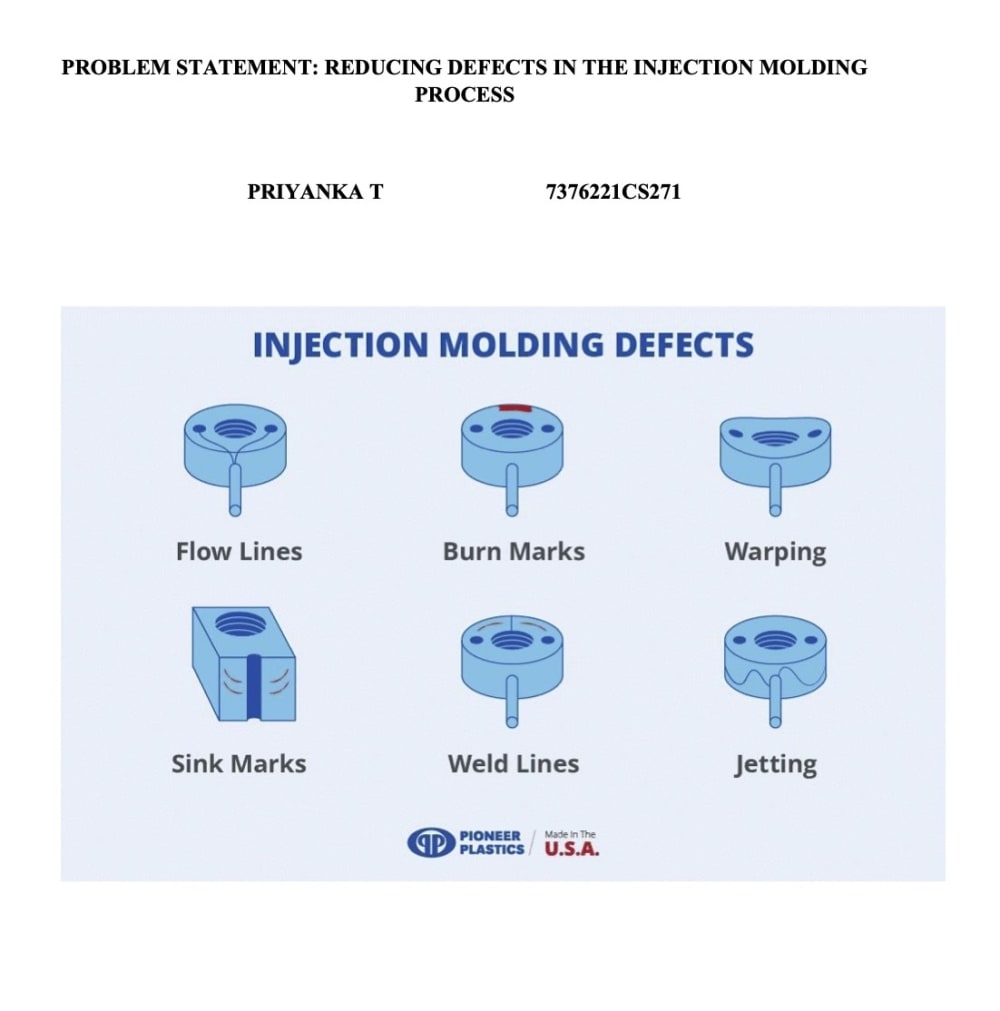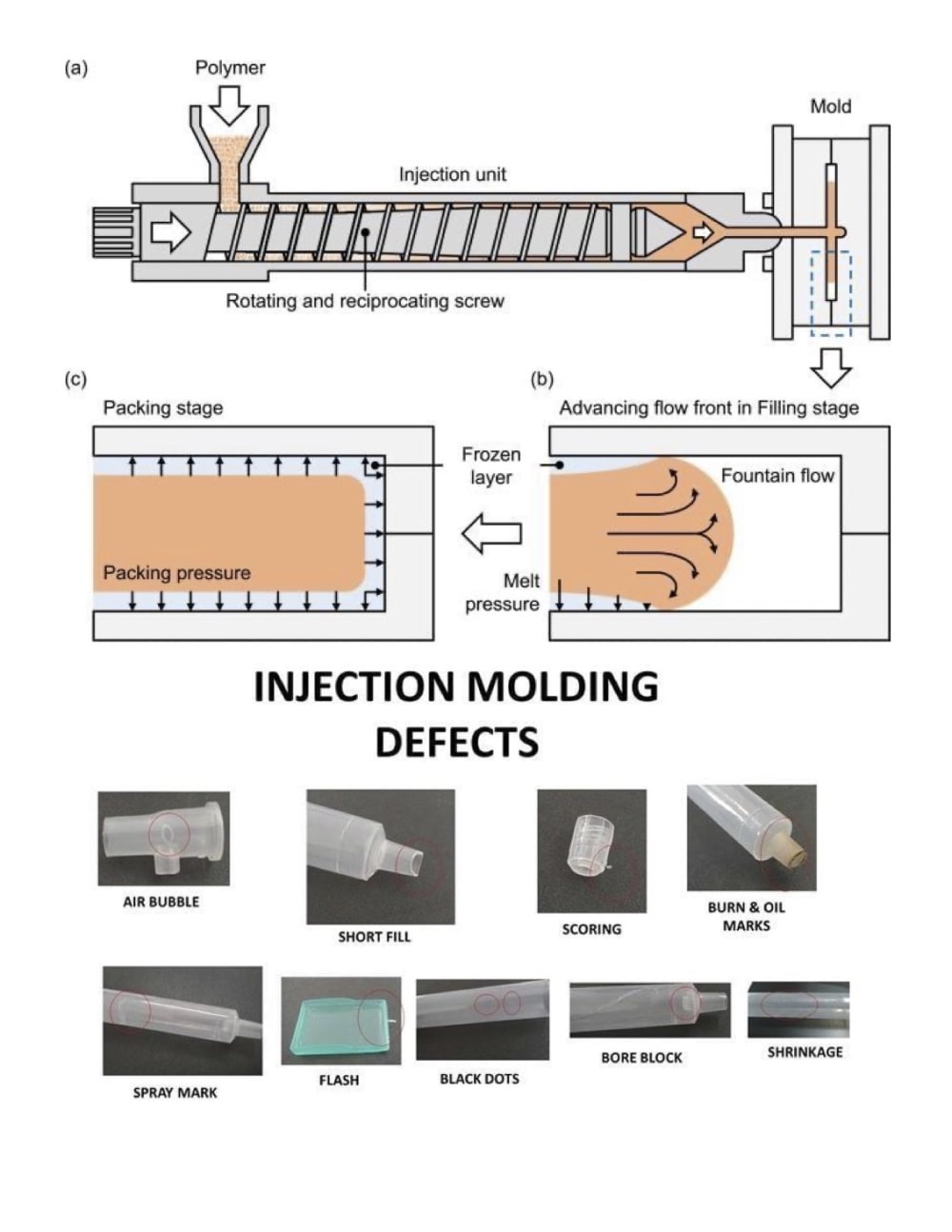Injection molding is a widely used manufacturing process for producing plastic parts. However, it frequently encounters defects such as warping, sink marks, and short shots, which can lead to increased costs and wasted materials. Addressing these issues requires a structured approach encompassing root cause analysis, process optimization, and continuous improvement.
Step 1: Root Cause Analysis
Data Collection:
The first step is to gather comprehensive data on defect types and their frequencies from the production line. This includes recording process parameters such as temperature, pressure, and cycle time. Additionally, information on material properties and mold design specifications should be collected to understand potential contributors to defects.
Analysis:
With the collected data, statistical tools such as Pareto charts can be utilized to identify the most prevalent defects. Subsequently, a cause-and-effect analysis (Fishbone diagram) can help pinpoint potential root causes. This analysis typically reveals factors related to materials, machine settings, and mold design as primary contributors to defects.
Step 2: Process Optimization
Material Selection:
Ensuring the use of suitable materials is crucial. Manufacturers should collaborate with material suppliers to guarantee consistency and quality of raw materials. Material properties must align with the specific requirements of the injection molding process to minimize defects.
Mold Design Improvement:
Improving mold design is another critical aspect. This involves working with mold designers to enhance uniformity in material flow and cooling within the mold. Simulation software can predict and address potential issues during the design phase, ensuring a robust mold design that mitigates common defects.
Process Parameter Optimization:
Optimizing process parameters is essential for defect reduction. Design of Experiments (DOE) can systematically vary parameters such as temperature, pressure, and injection speed to determine optimal settings. Implementing process control tools helps maintain consistent conditions and detect deviations promptly, preventing defects.
Step 3: Implementation and Monitoring
Pilot Testing:
Before full-scale implementation, the optimized process parameters and improved mold design should be tested in a controlled environment. This pilot phase allows for close monitoring to ensure that the changes effectively reduce defects.
Training and Documentation:
Production staff must be trained on the new process parameters and best practices for material handling and mold maintenance. Comprehensive documentation of the optimized process and standard operating procedures (SOPs) is crucial for consistency and knowledge transfer.
Continuous Improvement:
Establishing a feedback loop for continuous monitoring and data collection on defect rates is vital. Regular analysis of this data enables ongoing improvements and adaptation to any changes in material properties or production requirements. Lean manufacturing principles, such as Six Sigma, can be applied to systematically reduce variation.
Expected Outcomes
Implementing this structured approach to defect reduction in injection molding yields several benefits:
- Reduced Defects: A significant reduction in the frequency and severity of defects, leading to higher quality products.
- Cost Savings:Decreased material waste and lower costs associated with rework and scrap.
- Improved Efficiency:Enhanced overall efficiency of the injection molding process, resulting in higher productivity and throughput.
- Consistent Quality: Improved consistency in product quality, meeting or exceeding customer expectations.
Like this entry?
-
About the Entrant
- Name:Priyanka T
- Type of entry:individual
- Patent status:none





